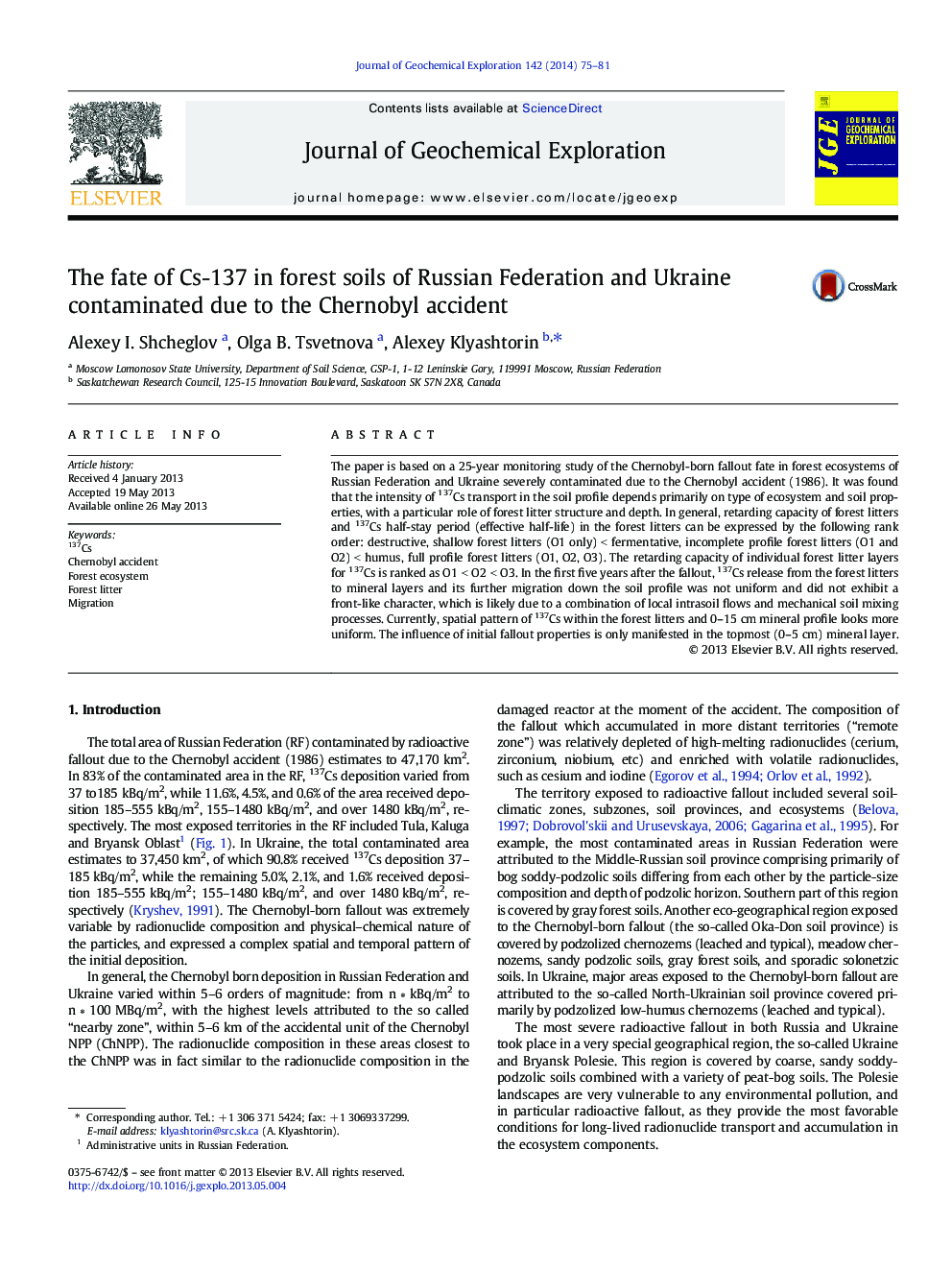| Article ID | Journal | Published Year | Pages | File Type |
|---|---|---|---|---|
| 4457405 | Journal of Geochemical Exploration | 2014 | 7 Pages |
•Key sites contaminated due to Chernobyl accident have been monitored for 25 years.•137Cs fate in the soils depends primarily on soil and forest litter properties.•137Cs effective half-life is maximum in the full-profile pine forest litters.•137Cs effective half-life is minimum in thin oak forest litters.•Spatial variability of 137Cs in the soils decreased considerably by 2012.
The paper is based on a 25-year monitoring study of the Chernobyl-born fallout fate in forest ecosystems of Russian Federation and Ukraine severely contaminated due to the Chernobyl accident (1986). It was found that the intensity of 137Cs transport in the soil profile depends primarily on type of ecosystem and soil properties, with a particular role of forest litter structure and depth. In general, retarding capacity of forest litters and 137Cs half-stay period (effective half-life) in the forest litters can be expressed by the following rank order: destructive, shallow forest litters (O1 only) < fermentative, incomplete profile forest litters (O1 and O2) < humus, full profile forest litters (O1, O2, O3). The retarding capacity of individual forest litter layers for 137Cs is ranked as О1 < О2 < О3. In the first five years after the fallout, 137Cs release from the forest litters to mineral layers and its further migration down the soil profile was not uniform and did not exhibit a front-like character, which is likely due to a combination of local intrasoil flows and mechanical soil mixing processes. Currently, spatial pattern of 137Cs within the forest litters and 0–15 cm mineral profile looks more uniform. The influence of initial fallout properties is only manifested in the topmost (0–5 cm) mineral layer.
